 It’s not a new opinion around here, but it bears repeating – Gegege no Kitarou has never been better. It’s a shame this show is getting so little attention outside Japan, where it generates great TV ratings and basks in its status as a cultural icon. This is a wonderful series on so many levels, and it continues to impress week after week. It’s just so consistent, not just episodically but across the production – casting, direction, music, writing. The characters are as fleshed out as they’ve ever been, and the visuals are almost too good to be believed. It’s not that often I use the word “admire” with a TV production, but that’s truly how I feel about this series and the staff behind it.
It’s not a new opinion around here, but it bears repeating – Gegege no Kitarou has never been better. It’s a shame this show is getting so little attention outside Japan, where it generates great TV ratings and basks in its status as a cultural icon. This is a wonderful series on so many levels, and it continues to impress week after week. It’s just so consistent, not just episodically but across the production – casting, direction, music, writing. The characters are as fleshed out as they’ve ever been, and the visuals are almost too good to be believed. It’s not that often I use the word “admire” with a TV production, but that’s truly how I feel about this series and the staff behind it.
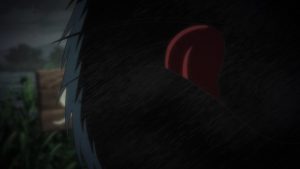 Here’s the thing… Gegege no Kitarou is a solidly entertaining show about colorful and interesting characters, but every story it tells also has a point. How often can we say that about anime, even good ones? It’s always been true with this franchise of course – Mizuki-sensei was a literate and socially conscious author to be sure – but for me at least, it’s never felt so immediate as it does with this version. A series whose episodes are based mostly on manga chapters written decades ago is doing a better job reflecting the state of modern Japanese society than any anime on the schedule. That’s a miracle of good adaptation right there.
Here’s the thing… Gegege no Kitarou is a solidly entertaining show about colorful and interesting characters, but every story it tells also has a point. How often can we say that about anime, even good ones? It’s always been true with this franchise of course – Mizuki-sensei was a literate and socially conscious author to be sure – but for me at least, it’s never felt so immediate as it does with this version. A series whose episodes are based mostly on manga chapters written decades ago is doing a better job reflecting the state of modern Japanese society than any anime on the schedule. That’s a miracle of good adaptation right there.
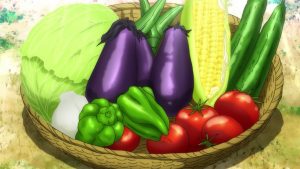 This episode is built around a few pillars, all of which work splendidly. We have Kawauso (Urawa Megumi, another seiyuu veteran of earlier Kitarou iterations), the mischievous river otter spirit at the center of the story. There’s a wonderful look at both Neko-musume and Mana, especially the former – what makes her tick, and the nature of hero worship among young teens. And – as is so often the case with Gegege no Kitarou 2018 – a very smart take on modern Japan. Specifically the disconnect with its traditional way of life, a subject Mizuki was clearly very passionate about.
This episode is built around a few pillars, all of which work splendidly. We have Kawauso (Urawa Megumi, another seiyuu veteran of earlier Kitarou iterations), the mischievous river otter spirit at the center of the story. There’s a wonderful look at both Neko-musume and Mana, especially the former – what makes her tick, and the nature of hero worship among young teens. And – as is so often the case with Gegege no Kitarou 2018 – a very smart take on modern Japan. Specifically the disconnect with its traditional way of life, a subject Mizuki was clearly very passionate about.
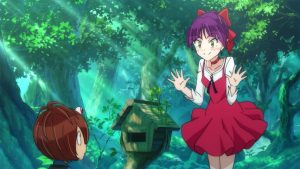 It’s cleverly suggested that Kawauso’s role here is altogether different than it actually is. An old woman and her husband have had an accident, and fallen down a cliff – he’s made it home, but she disappeared. Kawauso seems to have caused the problem and kidnapped her – perhaps intends even to eat her (as kawauso are reported to do, in some of the darker tales). But in truth, he’s rescued her when she was unable to walk, and in the guise of a human boy (otters, like foxes, are shapeshifters, and human children are their favorite disguises) is scamming food off humans (another classic kawauso behavior, right down to getting their stories wrong) in order to feed her.
It’s cleverly suggested that Kawauso’s role here is altogether different than it actually is. An old woman and her husband have had an accident, and fallen down a cliff – he’s made it home, but she disappeared. Kawauso seems to have caused the problem and kidnapped her – perhaps intends even to eat her (as kawauso are reported to do, in some of the darker tales). But in truth, he’s rescued her when she was unable to walk, and in the guise of a human boy (otters, like foxes, are shapeshifters, and human children are their favorite disguises) is scamming food off humans (another classic kawauso behavior, right down to getting their stories wrong) in order to feed her.
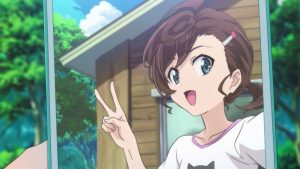 One of the “humans” this kawauso has been scamming is Neko-musume (ironic, as each of them has decided to help one of the old couple after seeing them in trouble), who stumbled across the old man passed out in his fields and decided to help him harvest his vegetables. It doesn’t matter to her that he’s human – he was in trouble, and she’s a compassionate creature. She’s also in love with Kitarou and terribly shy about it, so she’s leaving vegetables as gifts outside his house every day (among the many layers of subtle cleverness here is that this is classic cat behavior). Every day she dons unfashionable work clothes and works the fields, which poses quite a shock to Mana when she runs into her on a stroll near her parents’ cabin in the same mountains.
One of the “humans” this kawauso has been scamming is Neko-musume (ironic, as each of them has decided to help one of the old couple after seeing them in trouble), who stumbled across the old man passed out in his fields and decided to help him harvest his vegetables. It doesn’t matter to her that he’s human – he was in trouble, and she’s a compassionate creature. She’s also in love with Kitarou and terribly shy about it, so she’s leaving vegetables as gifts outside his house every day (among the many layers of subtle cleverness here is that this is classic cat behavior). Every day she dons unfashionable work clothes and works the fields, which poses quite a shock to Mana when she runs into her on a stroll near her parents’ cabin in the same mountains.
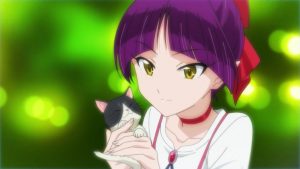 There’s a scene here between Mana and Neko-musume that’s just so perfect it deserves to be help up as a shining example of how to communicate volumes with a few simple words, images and bars of music. Mana is initially disappointed to see her uber-fashionable idol this way, but Neko-musume is unfazed (until Kitarou comes along, at least). Mana is a classic city girl – scared of beetles, totally unaware of where her food comes from (or how good it can be, when it’s fresh and natural). Neko-musume is both teacher and big sister here, wistfully explaining to Mana about the connections between all living things, and how modern humans are slowly losing that connection. It’s beautiful in every sense of the word, right down to Catchick’s embarrassment when Kitarou sees her in her farm clothes and Kawauso spills the truth about the vegetable offerings.
There’s a scene here between Mana and Neko-musume that’s just so perfect it deserves to be help up as a shining example of how to communicate volumes with a few simple words, images and bars of music. Mana is initially disappointed to see her uber-fashionable idol this way, but Neko-musume is unfazed (until Kitarou comes along, at least). Mana is a classic city girl – scared of beetles, totally unaware of where her food comes from (or how good it can be, when it’s fresh and natural). Neko-musume is both teacher and big sister here, wistfully explaining to Mana about the connections between all living things, and how modern humans are slowly losing that connection. It’s beautiful in every sense of the word, right down to Catchick’s embarrassment when Kitarou sees her in her farm clothes and Kawauso spills the truth about the vegetable offerings.
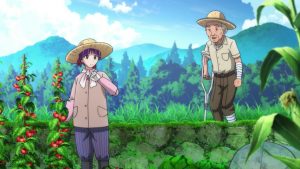 The denouement here is beautiful, too – when the truth about Kawauso and the old woman is revealed under duress from an angry cat. Kawauso is, as Neko-musume says, lonely – he too sees how the connections between people and their land are dying. It would have been sweet if he’d stayed with the old couple, who are surely lonely too in their way. But he’s a youkai, and for all that connections between youkai and humans are integral to her life Neko-musume knows Kawauso is better off with his own kind. All of he best human-youkai tales are bittersweet, it seems, and that’s certainly no less true with Gegege no Kitarou. Every note of this episode is spot-on, right down to the ending – not just earning its place in the pantheon of the franchise, but taking it to new heights.
The denouement here is beautiful, too – when the truth about Kawauso and the old woman is revealed under duress from an angry cat. Kawauso is, as Neko-musume says, lonely – he too sees how the connections between people and their land are dying. It would have been sweet if he’d stayed with the old couple, who are surely lonely too in their way. But he’s a youkai, and for all that connections between youkai and humans are integral to her life Neko-musume knows Kawauso is better off with his own kind. All of he best human-youkai tales are bittersweet, it seems, and that’s certainly no less true with Gegege no Kitarou. Every note of this episode is spot-on, right down to the ending – not just earning its place in the pantheon of the franchise, but taking it to new heights.


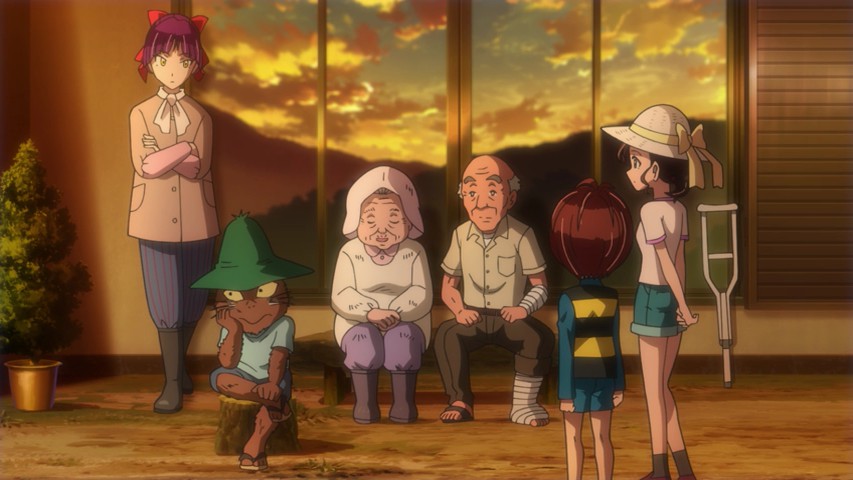

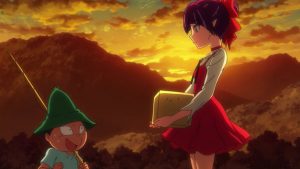
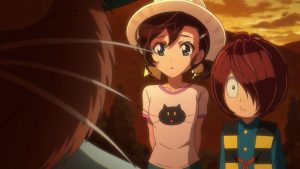
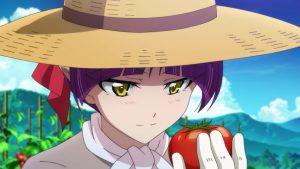
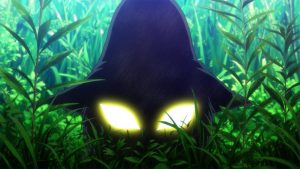

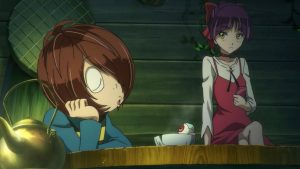
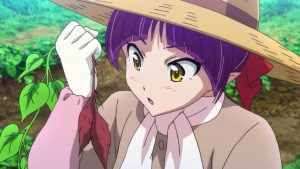
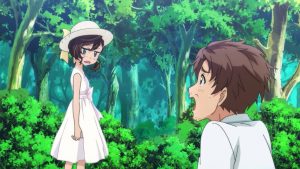
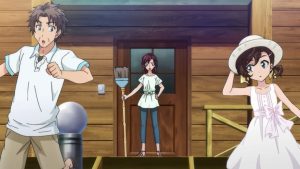
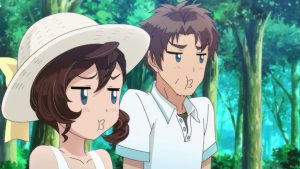
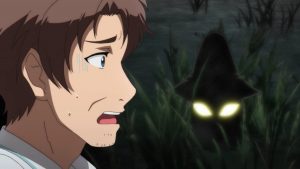
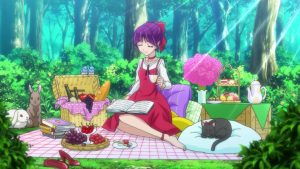

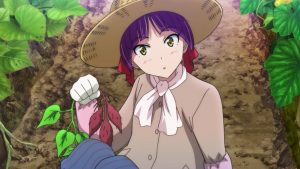

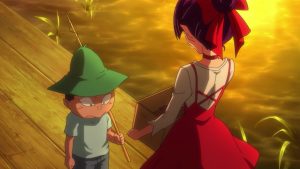
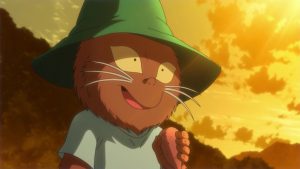
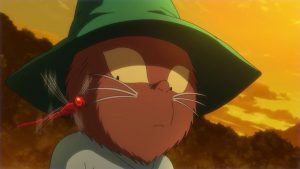
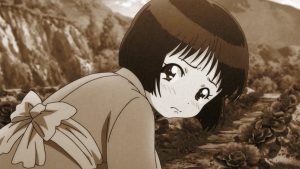
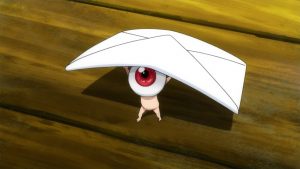
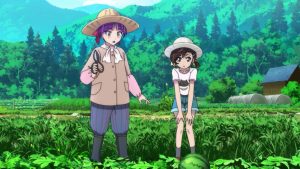
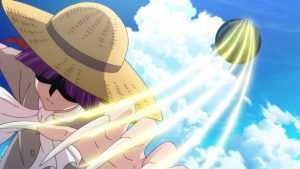
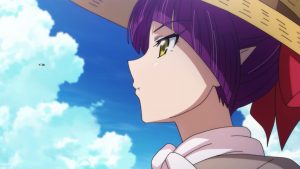

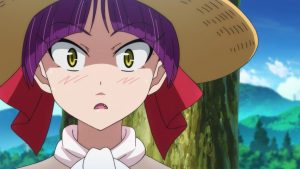
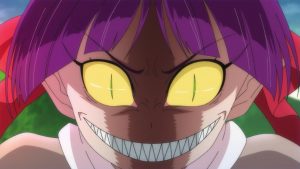
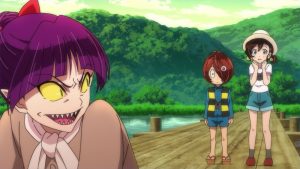
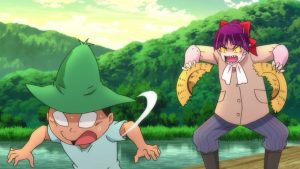
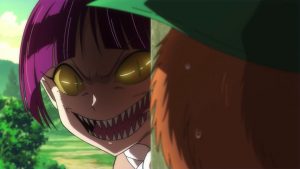
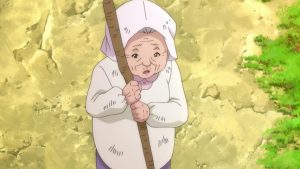
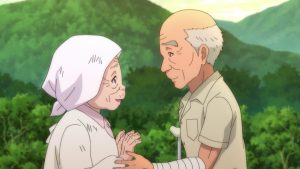
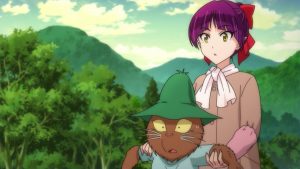

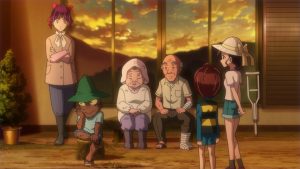
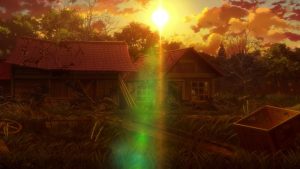
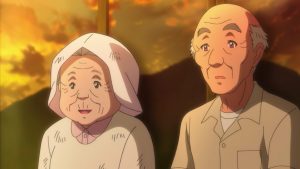
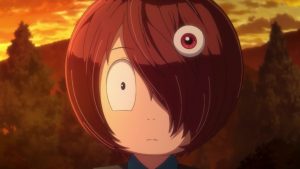
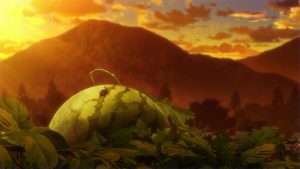

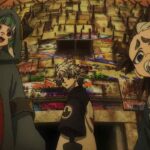
Yann
July 29, 2018 at 3:47 pmAnother “GeGeGe no Natsume” episode 😀 Probably my favorite episode so far, with the cat yokai earlier episode.
I really love this series when it lingers on the subtleties of yokai-human relationships.
I first thought this series was going to be too childish to be a keeper. I was wrong. And I’m glad…